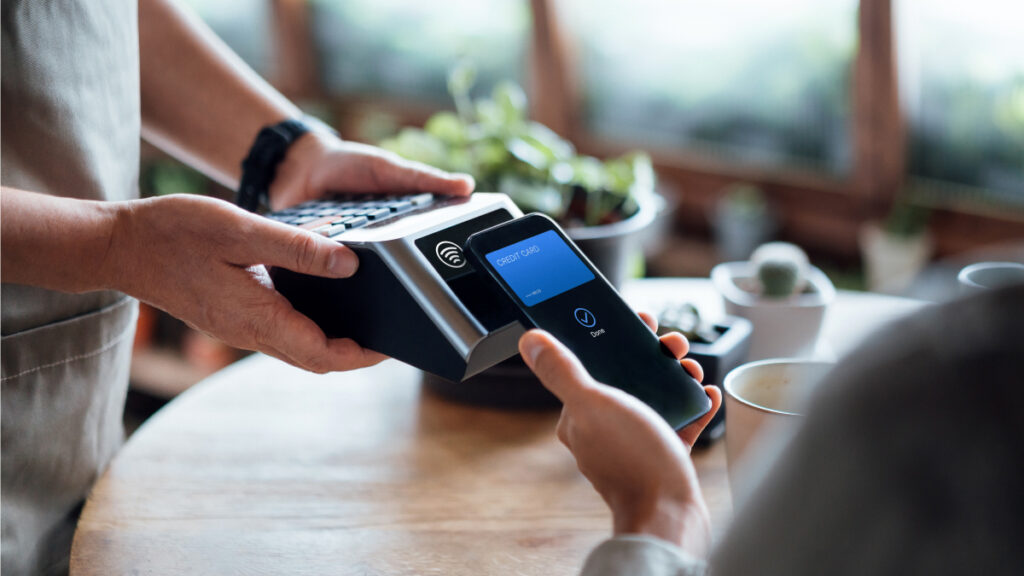In recent years, the world of payments has undergone a transformative journey, with contactless payments emerging as a frontrunner in the realm of financial transactions. This article explores the evolution, impact, and future trends of contactless payments, analyzing their rise even before the COVID-19 pandemic, their current significance, and the potential they hold for shaping the future of consumer behavior.
The Rise of Contactless Payments
Pre-COVID Surge:
The ascent of contactless payments did not wait for a global pandemic to gain momentum. Even before the announcement of COVID-19 as a pandemic, these payments were rapidly becoming a preferred method. As technology evolved, credit card issuers, banks, and fintech companies responded to the changing needs of consumers. Mastercard reported a staggering 40% rise in contactless payment usage during the first quarter of 2020, showcasing the increasing popularity of this payment method.
Changing Trends:
A.T Kearney’s study in 2018 revealed that only 3% of U.S. cards utilized contactless technology. However, as Americans emerged from lockdowns and quarantines, their behavior underwent a significant shift. The historically slow adoption of contactless payments in the U.S. was changing rapidly, with the tap-to-go technology redefining banking and payments roadmaps.
Contactless Payments: A Source of Convenience
How It Works:
Contactless payments, as the name suggests, do not require physical contact between the credit card or smartphone and the Point of Sale (POS) terminal. Mobile wallets like Apple Pay, Samsung Pay, and Google Pay leverage contactless modes of transactions.
Convenience in Action:
Observing customers tapping their phones or cards to pay for curbside pickups has become a common sight. In a world where plexiglass barriers may remain as the last vestiges of traditional banking experiences, tap-to-go technology offers customers not only convenience but also a sense of assurance.
Security and Contactless Transactions
Enhanced Security:
Contactless cards and mobile wallets prioritize security. Traditional magnetic stripe cards are susceptible to cloning, putting customers at risk of fraudulent charges. In contrast, contactless transactions generate a unique token for each transaction, devoid of credit or debit card details. The security measures used in contactless card transactions mirror those of chip-based transactions but with faster processing. Digital wallets further enhance security through PINs, passwords, or other verification methods.
Accelerated Adoption by Banks:
Banks, riding the tailwinds of COVID-19, are accelerating their adoption of secure contactless payment systems. With the help of experts like Go-Live Faster, they can swiftly transition from legacy payment systems, ensuring reduced test cycles, increased test coverage, and accelerated Go-Live under tighter implementation budgets.
Benefits of Leveraging Contactless Payments
Value to Stakeholders:
Contactless payment methods offer a range of benefits to stakeholders, including:
- Higher Revenue for Issuing Banks:
- Customers conduct a greater volume of low-value transactions through “tap and pay” cards and mobile wallets.
- Socially Distant and Faster Transactions:
- Consumers prefer the efficiency of contactless payments, contributing to quicker checkouts.
- Increased Revenue for Retailers:
- Faster checkouts lead to increased revenue for retailers, catering to the preferences of modern consumers.
- Greater Security:
- Enhanced security measures benefit both retailers and end consumers, minimizing the risks of fraudulent activities.
- Better Customer Experience:
- Reduced queuing and seamless transactions contribute to an overall improved customer experience.
The Changing Landscape
Merchant Acceptance:
According to VISA, the majority of U.S. merchants now accept contactless cards, signaling a widespread adoption of this payment method. Consumers with first-generation chip cards are actively seeking contactless counterparts, as noted by Harland Clarke.
Habits Shaped by the Pandemic:
As the pandemic persists, banking customers are solidifying habits inclined towards contactless transactions. This creates a fertile ground for the further expansion of contactless technology.
Accelerating the Journey:
Banks already on the contactless payments bandwagon must accelerate their journey to meet changing consumer demands. With the expertise of partners like Go-Live Faster, banks can leverage ready assets, including critical defects repositories and automated business scenarios, for faster validations during accelerated payment system integration.
Challenges and Opportunities
Biggest Threats and Competitors:
While contactless payments have experienced significant growth, they face challenges from traditional payment methods, digital wallets, blockchain, cryptocurrencies, and payment fintech startups. Each competitor brings its unique set of challenges, from security concerns to the struggle for consumer adoption.
Strategies for Success:
To thrive in this evolving landscape, businesses must consider various strategies:
- Accepting Contactless Payments:
- Investing in contactless payment terminals and ensuring compatibility with popular mobile payment apps attracts tech-savvy customers.
- Simplifying Checkout Procedures:
- Creating designated contactless payment lanes or integrating self-checkout kiosks improves efficiency and caters to contactless transaction preferences.
- Utilizing Mobile Payment Applications:
- Integration with popular mobile wallets offers convenience and opens avenues for loyalty programs and specialized marketing campaigns.
- Improving Security Measures:
- Prioritizing robust security measures, including encryption, tokenization, and advanced authentication methods, builds customer trust.
- Tracking Consumer Insights:
- Understanding customer behavior through transaction data and feedback informs marketing and sales strategy, leading to more informed business decisions.
- Educating the Public:
- Proactively informing customers about the advantages, convenience, and security of contactless payments through signage, advertising, and staff training promotes acceptance.
Trends and Opportunities for the Future
Emerging Trends:
- Wearable Payments:
- Wearable gadgets like smartwatches and fitness trackers present opportunities for contactless payment integration.
- Internet of Things (IoT):
- Integration of contactless payments with IoT gadgets, such as smart home systems and voice-activated assistants, expands the use of contactless payments beyond traditional terminals.
- Improved Data Analytics:
- Transaction data from contactless payments can be leveraged for deeper insights, allowing businesses to customize products, improve inventory control, and create more targeted marketing campaigns.
Analyzing Threats and Competitors:
- Traditional Payment Methods:
- While digital payments are on the rise, traditional methods like cash and card payments retain a significant market share, particularly among older demographics.
- Security Concerns:
- The rise of contactless payments has raised concerns about security and data protection, requiring continuous efforts to mitigate risks and maintain consumer confidence.
- Digital Wallet Rivalry:
- The emergence of digital wallets presents both a threat and an opportunity, necessitating collaborations and partnerships to stay competitive.
- Blockchain and Cryptocurrencies:
- The adoption of blockchain and cryptocurrencies poses a potential challenge to traditional contactless payment systems, emphasizing the need for adaptability in the face of technological advancements.
- Payment Fintech Startups:
- Agile and innovative fintech startups pose a challenge to established players, requiring strategic collaborations or acquisitions to stay competitive.
Conclusion:
The rise of contactless payments signifies a fundamental shift in consumer preferences. As consumers increasingly favor the speed, ease, and security of contactless transactions,

